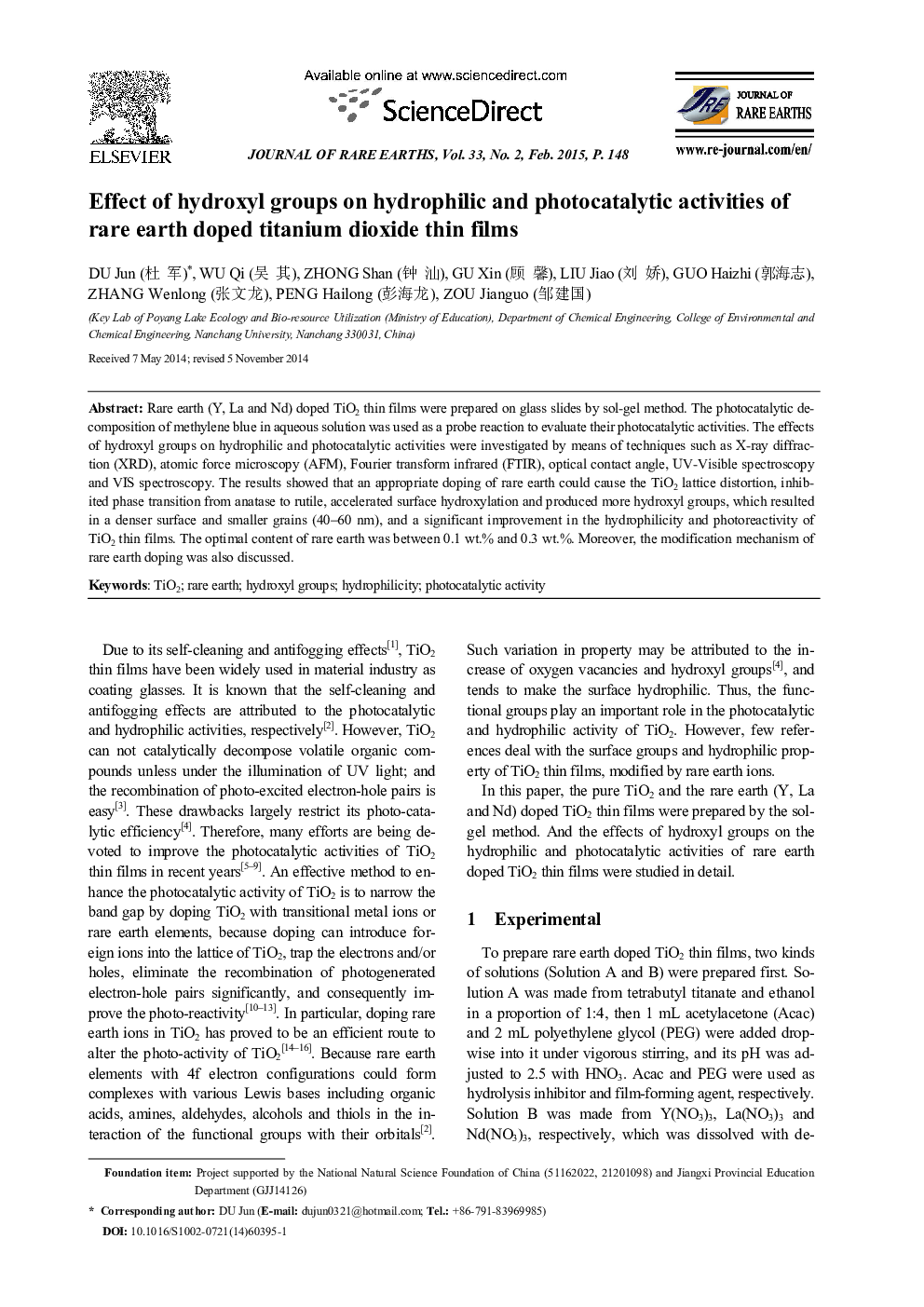| Article ID | Journal | Published Year | Pages | File Type |
|---|---|---|---|---|
| 1259216 | Journal of Rare Earths | 2015 | 6 Pages |
Rare earth (Y, La and Nd) doped TiO2 thin films were prepared on glass slides by sol-gel method. The photocatalytic decomposition of methylene blue in aqueous solution was used as a probe reaction to evaluate their photocatalytic activities. The effects of hydroxyl groups on hydrophilic and photocatalytic activities were investigated by means of techniques such as X-ray diffraction (XRD), atomic force microscopy (AFM), Fourier transform infrared (FTIR), optical contact angle, UV-Visible spectroscopy and VIS spectroscopy. The results showed that an appropriate doping of rare earth could cause the TiO2 lattice distortion, inhibited phase transition from anatase to rutile, accelerated surface hydroxylation and produced more hydroxyl groups, which resulted in a denser surface and smaller grains (40–60 nm), and a significant improvement in the hydrophilicity and photoreactivity of TiO2 thin films. The optimal content of rare earth was between 0.1 wt.% and 0.3 wt.%. Moreover, the modification mechanism of rare earth doping was also discussed.
Graphical AbstractVariation of CA/CA0 of methylene blue solution with the photocatalytic timeFigure optionsDownload full-size imageDownload as PowerPoint slide
